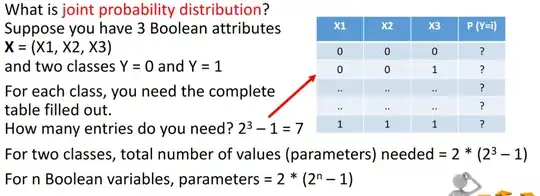Related question: What is the meaning of pyx theta and px theta and px yz
In this question, doesn't the p represent the density function? Then why is it written in a lot of text as probability? For example, $p(y^i|x^i;\theta)$ is written as probability of $y^i$ given $x^i$ parametrized by theta, though it should be probability density of $y^i$ given $x^i$ parametrized by $\theta$.
As asked in comment -
